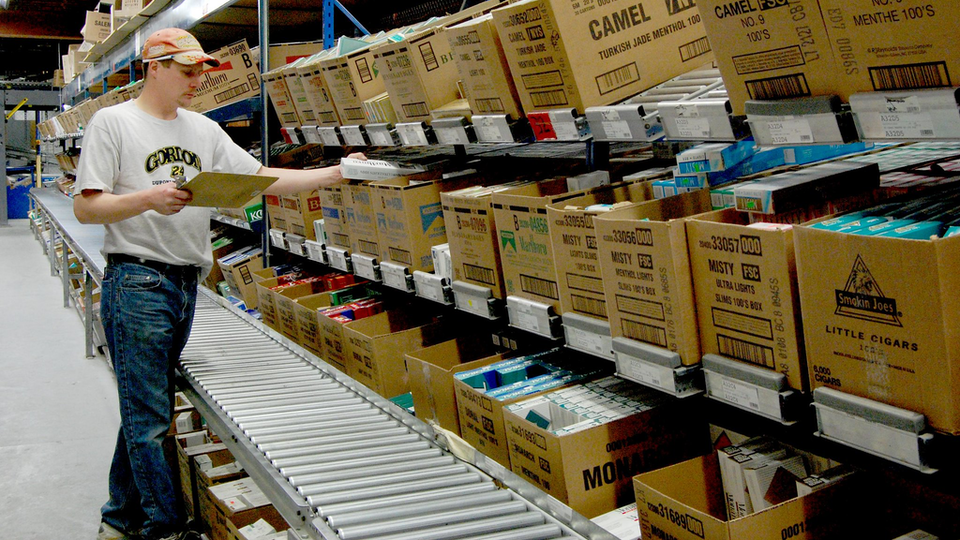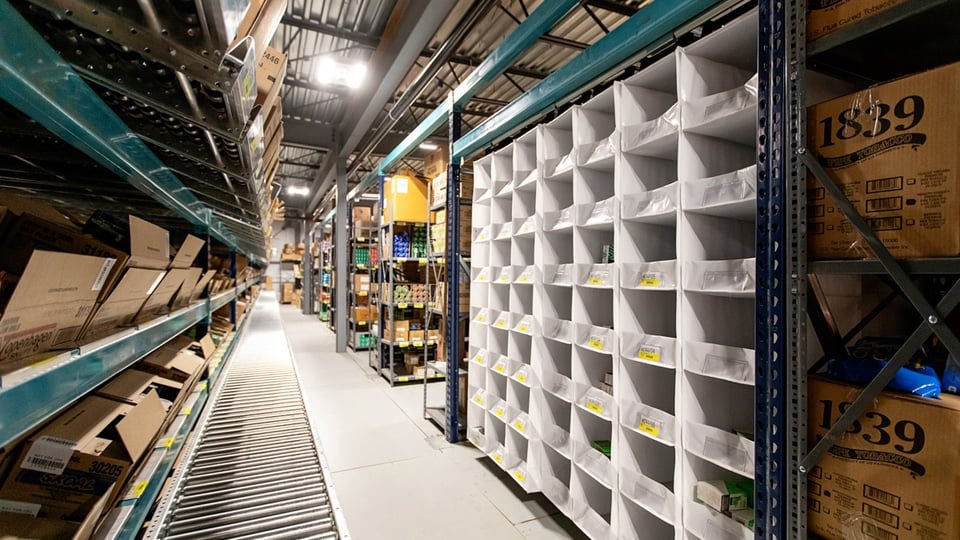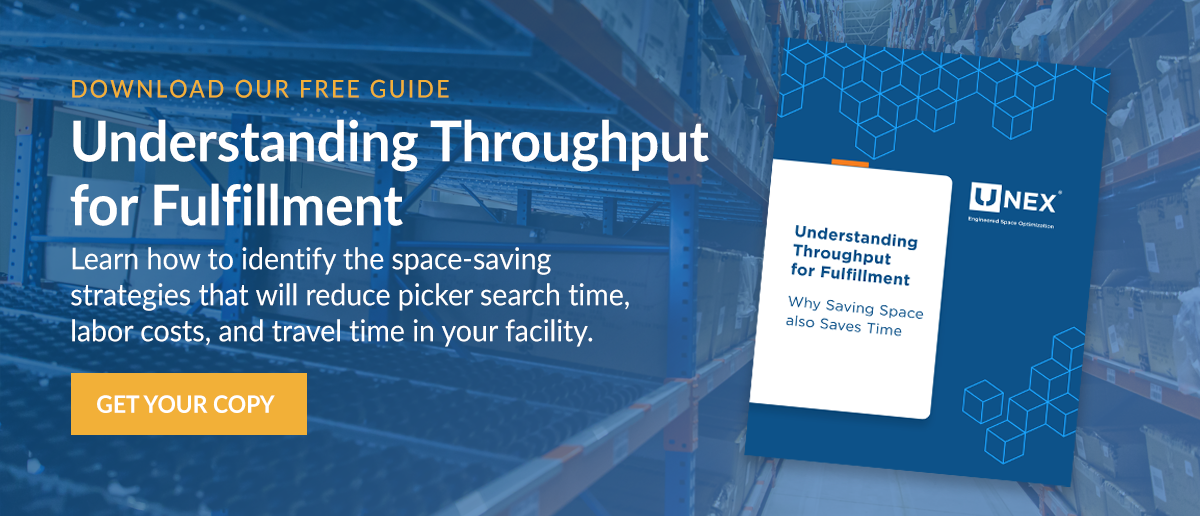6 Simple Steps to Choosing the Right Warehouse Storage Mediums

Key Takeaways
- Storing SKUs based on throughput is essential to reducing errors and wasted space in warehouse operations.
- The right mix of storage mediums boosts picking efficiency and supports order accuracy across fast, medium, and slow-moving inventory.
- UNEX solutions like Pallet Track, SpanTrack, and SpeedCell optimize storage for high-, medium-, and low-throughput SKUs.
In a fast-paced warehousing environment, every step, every turn, and every moment counts, which makes having the right people, processes, and equipment more important than ever. This doesn’t come as a shock to anyone who works in the supply chain, but in today’s market, which is fraught with challenges, increasing efficiency and decreasing costs is crucial to success. In this article, we will explore warehouse storage challenges and highlight our 6 key steps for selecting the right storage mediums for your operation.
Today’s Warehousing and Fulfillment Challenges
Businesses with warehousing and fulfillment operations have experienced significant growth and transformation in recent years. Factors like eCommerce expansion, technological advancements, and changing consumer expectations have been at the forefront of this evolution. This period of rapid growth has presented several challenges that make it increasingly difficult to keep up with demand. But 3 key issues in particular seem to persist within the warehousing sector:
- Labor: Challenges finding and keeping labor and combating increasing wages.
- Increasing Consumer Expectations: Today’s customers want fast or instant delivery with a myriad of fulfillment options such as online, delivery, BOPIS, curbside, etc.
- Space Constraints: With increased demand comes the need to keep more inventory on hand. This also creates for work-in-progress (WIP) inventory. Warehouses and fulfillment centers continually struggle to maintain the appropriate space needed to accommodate a wide and increasing variety of SKUs.
Due to these challenges, it can be tough to understand which SKU storage solutions will work best for your operation. Storing items by throughput and selecting the right storage mediums for each type of SKU will help you keep pace and remain competitive. Doing so will ensure you get the most out of your space and stay on top of the challenges above.
A Crash Course in Throughput
Throughput is the rate at which your products are processed. Each product has its own throughput, and depending on a variety of factors, most warehouses have:
- Slow-movers (low throughput)
- Medium-movers (medium throughput)
- Fast-movers (high throughput)
In most warehouses, about 20% of your products fall into the fast-movers category and generally make up the bulk of your revenue. These high-volume products need to be easily and quickly accessible and replaced. They generally need to be as close to the picker as possible because they’re being picked so fast.
The other 80% is made up of your medium-movers and slow-movers. Products that fall into the medium range are the majority of the total picks of your operation, so they need to be highly accessible. Slow-movers are ordered infrequently, so they don’t require a high-profile position in your warehouse.
Storing items in the wrong storage medium leads to:
- Operational issues
- Worker fatigue
- Injury
- Mispicks
- Replenishment issues
- Excess inventory
- Bottlenecks
Improperly sized storage mediums are often just as much of a problem as the organization of the warehouse itself. Thus, implementing the right warehouse storage mediums and storing SKUs according to throughput is crucial to success.

Types of Storage Mediums
Depending on what kind of products you are storing and how frequently they are picked, your storage mediums will likely include a healthy mix of the following:
- Picking directly from pallets
- Storing items in and picking from static shelving
- Storing items in and picking from dynamic shelving (like SpanTrack or SpeedCell)
- Storing items in fully automated systems and automating order picking (AS/RS)
What’s important to remember is that having a high budget doesn’t necessarily mean you should go fully automated or fill every inch of floor space with dynamic shelving.
For the same reason, a low budget doesn’t mean static shelving is the only solution—what matters is picking the right warehouse storage equipment and storing items according to throughput to ensure your fulfillment process is as efficient and effective as possible.
When your warehouse storage is optimized, you’ll see all kinds of benefits, including increased capacity, reduced variable costs, and improved employee performance. You’ll also see a drop in turnover combined with an increase in attendance—employees who know what to expect daily in a well-organized operation that is not as physically demanding as others generally want to stick around.
Stress-related injuries decrease because employees aren’t bending as much and have less reason to move heavy items unsafely, which can enormously impact your bottom line over time. You’ll also experience fewer errors, especially during seasonal peaks, reducing returns while increasing customer satisfaction.
Sounds great, right? Now all you have to do is choose the equipment that’s right for you. Most existing warehouse storage solutions are inefficient, and many leave lots of space unused, especially vertical space. With the right storage mediums, you can reclaim space and make your entire operation more efficient.
Learn how to save space in your facility. Download The Guide To Optimizing Warehouse Space Utilization!

6 Steps to Follow When Choosing Warehouse Storage Solutions
Choosing the right storage solution is crucial to building an efficient, effective warehouse. You need to consider a wide variety of factors and options before getting started, and it’s best if you have a budget and some target KPIs to guide your decision. Here are the steps you should take to ensure you get the right equipment for your product mix:
1. Analyze your inventory
Analyze your inventory carefully, looking at traits like throughput, SKU diversity, weight, daily volume, and turnover frequency. While this can be tedious and time-consuming, the best warehouse storage solutions require proper inventory placement based on a thorough analysis.
2. Determine SKU velocity
Review the dynamics of the orders you receive every day and every week. What products have high throughput, medium throughput, and low throughput? How often are they being picked every hour/day/week? Which are the most labor-intensive? Knowing the answers to these questions will help determine where you should store each SKU.
3. Consider your warehouse dimensions
Consider the constraints of the warehouse itself. What existing equipment do you have to work with? How much vertical space is wasted or could be put to better use? Where is automation possible, and where would it not make sense? How does the layout dictate the movement of products as they’re picked, packed, and loaded?
4. Identify picking methods that will work best for you
Consider your warehouse’s preferred picking methods. Do you prefer batch, zone, wave, or a hybrid solution? Why is this method preferred? Is there a reason it has to stay this way? Is that reason based on your current warehouse storage systems? Could a more efficient or effective method be chosen with the right equipment?
5. Select the right combination of storage mediums for your product mix
Look at all the different storage mediums available and match them to products based on throughput and your order-picking flow.
Fast-Movers
Not all SKUs need to be moved from a pallet position onto a shelf. For your very fast movers, double handling these SKUs is just not worth it. But instead of picking these pallets from static positions, storing high throughput items in a solution like UNEX Pallet Track will optimize pallet flow and help create an ideal FIFO inventory stock rotation.
Medium-Movers
Medium-movers are generally best served by dynamic storage solutions like carton flow. UNEX SpanTrack is a great choice for your fast to medium-moving SKUs. SpanTrack can be added to any pallet rack and can store a wide variety of product sizes and weights. SpanTrack is designed to eliminate hang-ups and keep items flowing seamlessly to the point of pick. SpanTrack can be used for case picking or each picking.
Slow-Movers
Slow-moving SKUs should be stored in static shelving or a dynamic high-density industrial shelving system like UNEX SpeedCell. SpeedCell can compress 200 feet of rack or shelving into a mere 40 feet. The greater SKU density means you can put all your slow-movers in one easy-to-reach place, reducing travel time and increasing pick accuracy.
6. Focus on continuous improvement
In a well-optimized warehouse, SKU storage is never truly complete. As your customers' needs change and grow, so too will your product mix. That’s why it is important to slot SKUs according to throughput and re-slot as often as needed. Continually evaluate how you are storing your products, and re-slot inventory as needed to continue maximizing space.
Let UNEX Help You Select the Right Storage Solutions for Your Warehouse
If you’re looking to optimize the space in your warehouses while increasing efficiency, productivity, and employee morale, we’d love to help. Talk to one of our product specialists today. They’ll help you identify the right storage mediums for your product mix and tailor solutions to meet the unique needs of your business.



